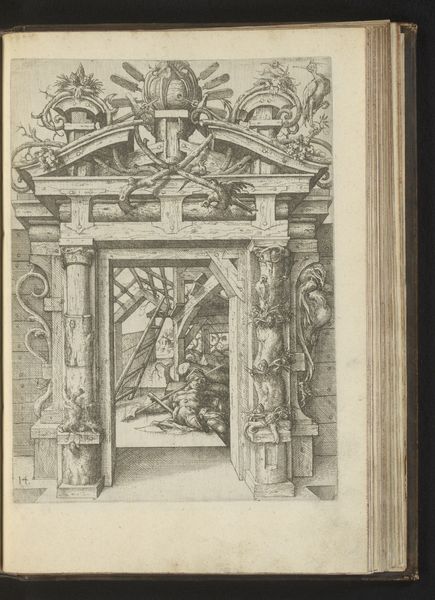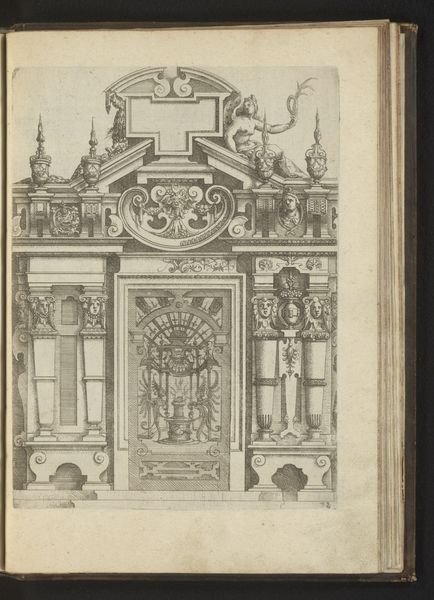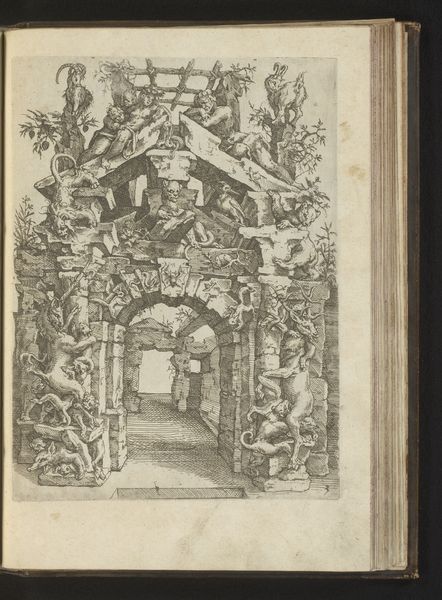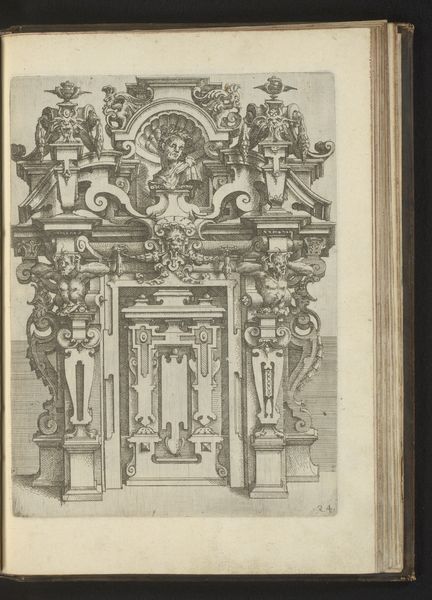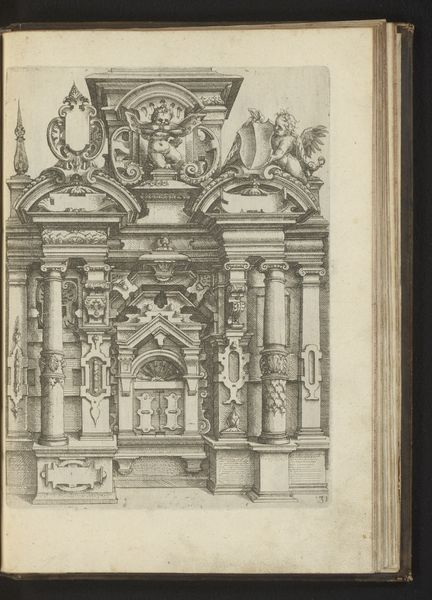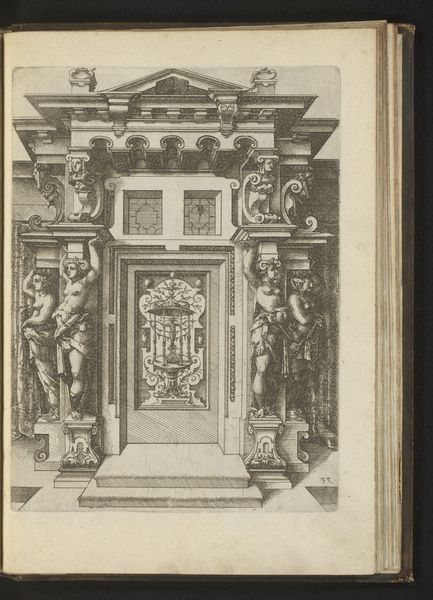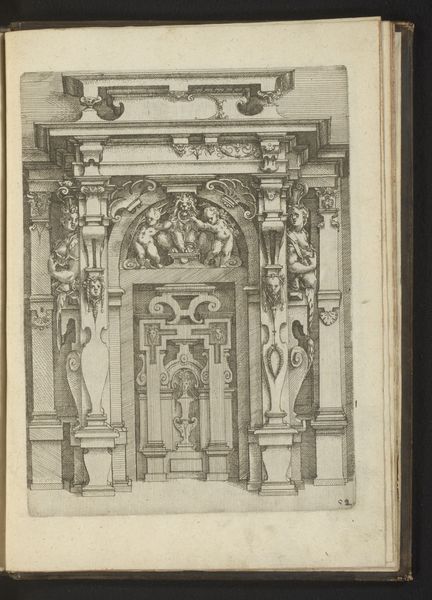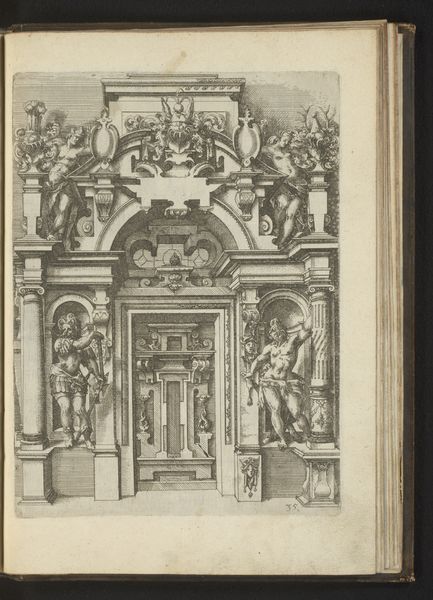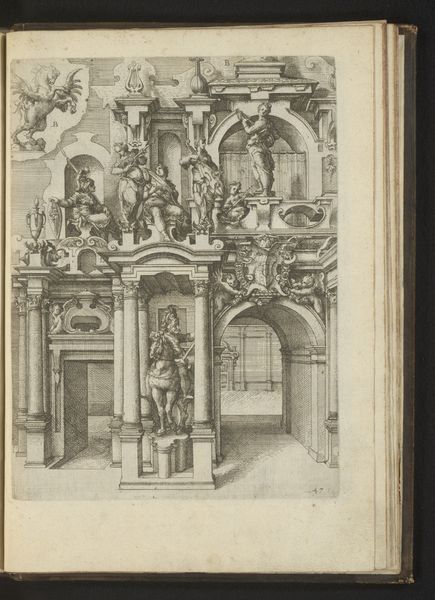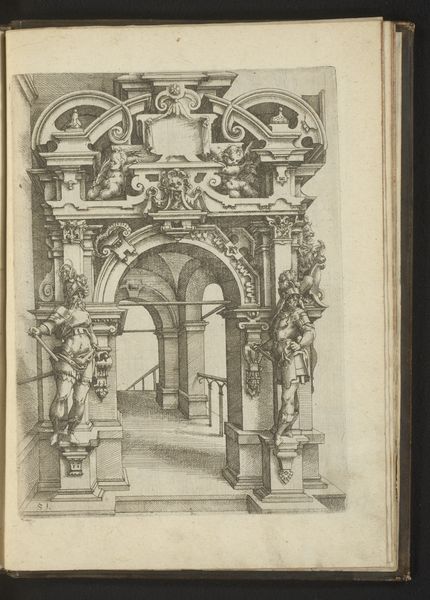
Portaal van een wijnkelder met saters, bokken en druiven bij een wijnvat en bokaal tussen de gebroken frontondelen 1593 - 1595
0:00
0:00
drawing, ink, engraving, architecture
#
drawing
#
aged paper
#
toned paper
#
mechanical pen drawing
#
pen sketch
#
sketch book
#
11_renaissance
#
personal sketchbook
#
ink
#
pen-ink sketch
#
line
#
pen work
#
sketchbook drawing
#
sketchbook art
#
engraving
#
architecture
Dimensions: height 250 mm, width 186 mm
Copyright: Rijks Museum: Open Domain
Editor: Here we have Wendel Dietterlin’s "Portaal van een wijnkelder met saters, bokken en druiven bij een wijnvat en bokaal tussen de gebroken frontondelen," created around 1593-1595. It’s a pen and ink drawing with engraving, and you can really see the layering of lines that builds up the architectural details. I find it striking how the human and mythological figures seem to be emerging directly from the architecture itself. What's your interpretation of its composition and style? Curator: Its spatial organization strikes me immediately. Notice how the portal's structure is articulated: the precise linearity, balanced by the organic, almost chaotic rendering of the satyrs and the wine-related ornamentation. This tension, this interplay, isn't just decorative; it seems integral to the drawing’s aesthetic argument. The artist’s deliberate rendering of textures – the smoothness of the stone versus the fleshy volume of the figures – sets up a compelling binary. Editor: So you're focusing on the contrast in the forms and textures. What about the broken pediment? It seems intentionally fragmented. Curator: Indeed! Consider the “brokenness.” It's not simply damage. The fractured pediment is, structurally, an act of disruption. A disruption, however, contained and defined by the stable architectural form beneath. The disruption becomes part of a controlled aesthetic, posing questions about boundaries and definitions. Does this fragmentation, this opening-up, suggest access to something beyond the constructed façade? Editor: That's fascinating; I hadn’t thought about the “brokenness” being a purposeful disruption within a structured framework. I initially saw it as a design flourish, but your analysis makes me think about its deeper implications. Curator: Precisely. It is the interplay of these carefully considered structural and textural components that lends the artwork its considerable force, don't you agree? Editor: Yes, I think I better understand how these elements work together to give meaning to this piece. Thanks!
Comments
No comments
Be the first to comment and join the conversation on the ultimate creative platform.
